Finn Hall/American Legion Hall
Introduction
Text-to-speech Audio
At one time there were two Finn Halls in Ilwaco, the first was located on second street in Ilwaco. Having split with the Finnish Benevolent Society, the Finnish Socialist Club built a hall on the south side of Lake Street in 1915 and named it the Worker’s Temple. In 1932, it was purchased by Lodge 26 of the United Kaleva Brothers and Sisters. The building was used to house soldiers during WWII and then was purchased by the American Legion.
Images
Finnish Work Temple located on Lake Street, Ilwaco.
.jpg)
Original Finnish Hall, Temperance Society Hall, located on second street, Ilwaco.
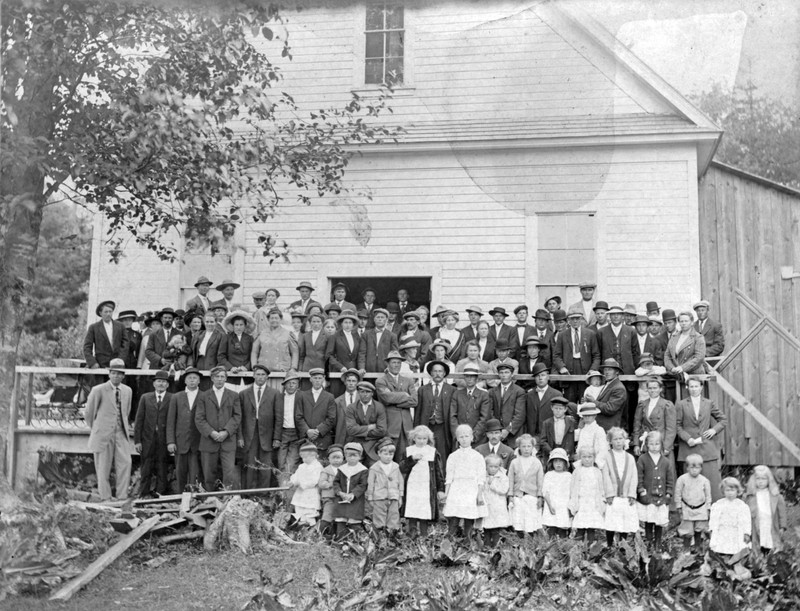
Original Finnish Hall, Temperance Society Hall, located on second street, Ilwaco.
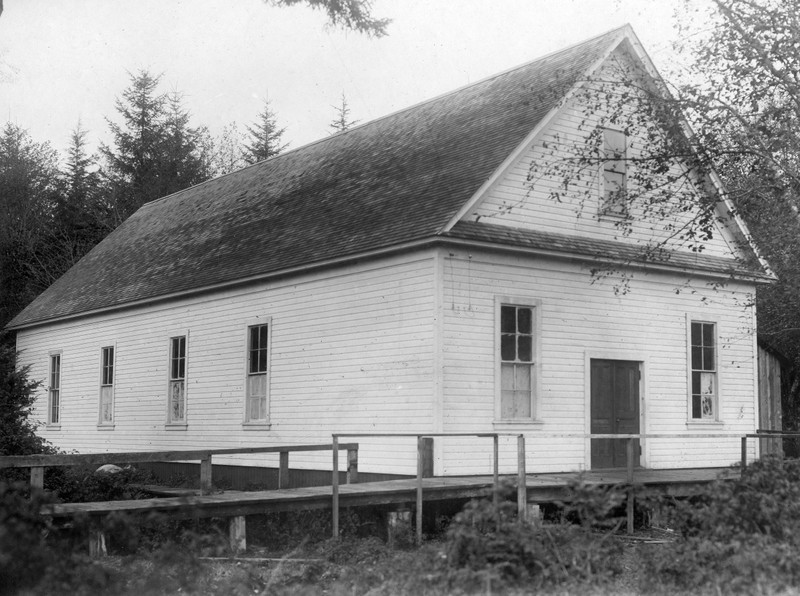
Photo by Larry Weathers. American Legion Post 48 - Don R. Grable post c. 1963.
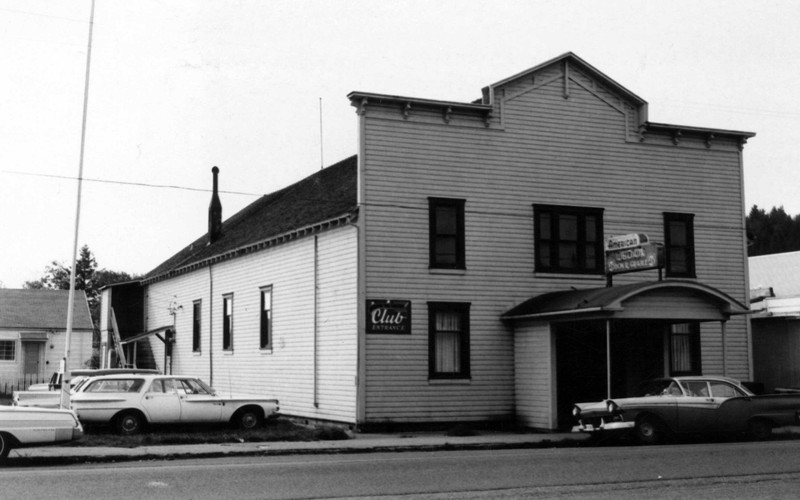
Don R. Grable, the namesake of the American Legion Post 48 in Ilwaco.
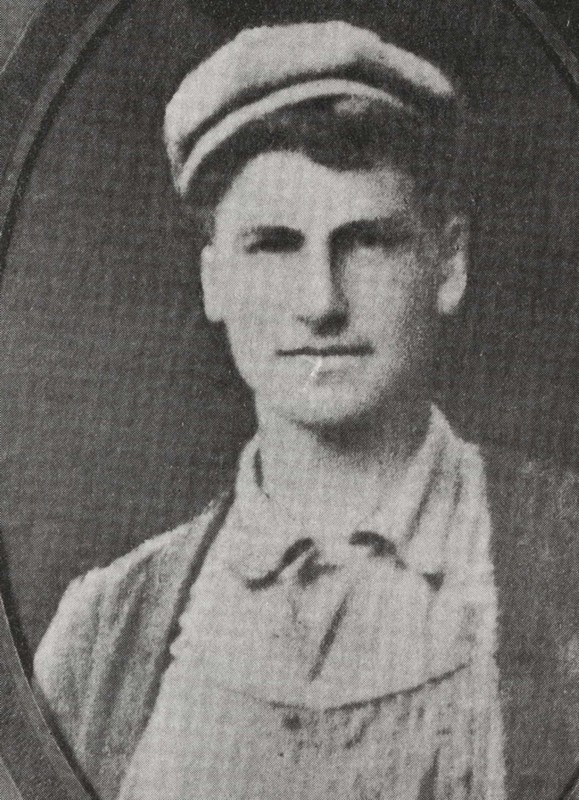
American Legion on Lake Street, Ilwaco.
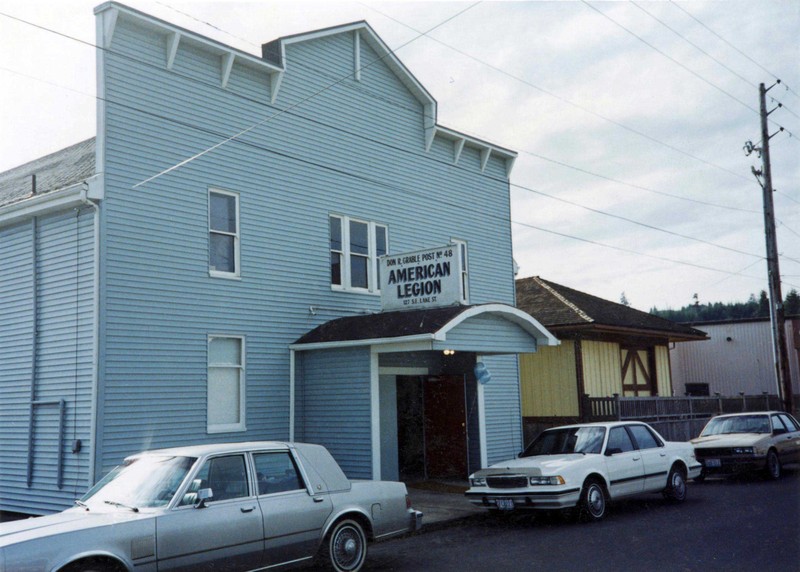
Backstory and Context
Text-to-speech Audio
Columbia Hall aka Finn Hall & Temperance Hall
Columbia Hall was a simple building located on Second Street in Ilwaco. It was also known as Finn Hall and Temperance Hall. Merle Reinekka writes in “Ilwaco’s Early Finns”:
“The late 19th century was a raucous time in Ilwaco. With the fishing fleet and canneries flourishing, bars and dance halls also flourished. The heavy use of alcohol by Finnish-Americans was a cause of concern among the more conservative and image-conscious members of Ilwaco's Finn population. As a result, they embraced the Temperance movement and formed the Benevolent Society of Ilwaco. The group met regularly in Columbia Hall. The building was also used for benefits, lectures, dances, musical programs, and wedding receptions. No liquor was allowed.
In the years 1906-1914, the socialist labor movement began to establish a foothold among Finnish immigrants. An Ilwaco chapter was founded in 1911, calling itself the Finnish Socialist Club. It’s membership, including wives, numbered about 70.
Receptivity to left-wing political leanings is thought to come from the fact that Finns had migrated from a rigorous uncertain home life in poverty….It was not so much an antipathy toward law and order, as much as it was a protest against labor oppression which was all too prevalent at the time.
A large number of the Socialists Club members were members of the Benevolent Society, who they sought to convert Columbia Hall to the meeting place for the socialists. A three-year legal battle ensued, which was settled by the State Supreme Court in 1914, with judgment favoring the Benevolent Society.”
The Socialists Club was finally able to build its own hall called the Work Temple on Lake Street in 1915. … The Socialist movement gained strength among Finns in the U.S., but as long as local group activities took place in the privacy of home or hall, most local residents tolerated it. When the Bolshevik revolution began in 1917, followed by Finland's declaration of independence and civil war in 1918-1919, a renewed attention was focused on socialist Finns in America.
The question of patriotism among immigrant Finns, more than any suspicion of subversive activities, became the over-riding concern. Most of Ilwaco’s Finns had come directly from a traditional and conservative folk society and were supportive of “anti-Red” movements. When the United States entered World War I in 1917, many of Ilwaco’s Finnish men were called to serve. Three of the Don R. Grable Post 48 charter members were Henry Sankela, Wayne Suomela, and Irvin Saari, all Ilwaco Finns.
The Work Temple
For a time, Ilwaco was home to two Finnish Halls. In 1911 the Ilwaco chapter of the Finnish Socialist Club was founded. They met in Columbia Hall on 2nd Street along with their fellow Finnish organization the Benevolent Society. A split in beliefs soon had them at odds over their meeting place. After a court battle granted the use of Columbia Hall to the Benevolent Society, the Finnish Socialist Club built a grand new hall on Lake Street and named it the Workers Temple. It opened in 1915.
The Great Depression of the late 1920s and early 30s saw a decline in the membership of the Socialist Club. As members dropped out and moved away, it reached the point that the organization’s expenses exceeded their income. So, it became necessary to sell the Worker’s Union Hall. The buyer was Lodge No. 26 of the United Kaleva Brothers and Sisters, the local chapter of a benevolent and fraternal order of West Coast Finns. The group of about 50 local residents had been renting space in the Worker’s Union Hall since the Ilwaco chapter formed in 1926. They purchased the Hall for $2,000 in 1932.
Hard times continued to prevail, and membership diminished, as did lodge functions. The lodge was commandeered during World War II and used to billet soldiers for the radar station at Bear Mountain. After WWII the United Kaleva Brothers and Sisters sold the Lodge to the American Legion. The Don R. Grable Post 48 of the American Legion welcomed WWII veterans home with a lively facility that included the addition of a bar where Vets could meet and tell war stories. The Legion Hall on Lake Street was home for almost 70 years when it was sold to River City Arts in 2004. The building was sold again in 2010 and is now home to the Peninsula Players, a local theater group.
Don R. Grable
Don Raymond Grable was born in Ilwaco on November 25, 1893, the son of Jerome and Catherine Ann Grable. Jerome Grable was a Civil War Veteran, although his name does not appear on any Army records. This is due to the fact that during the Civil War if a man who has been drafted had the money, he could pay another man to go in his place. Jerome Grable was such a hired replacement.
Don Grable grew to manhood in Ilwaco and was a fisherman and logger. He never married. Don R. Grable was inducted into the Army in 1918 and was a member of Company D, First Battalion, 361st Infantry. He was killed in battle on the morning of September 26, 1918, at the very beginning of the Argonne offensive, and was one of the first men of his company to die on the field of battle.
The body of Don R. Grable was brought from France and he was buried in a solemn funeral here on Sunday, August 21, 1921.
“The final honors, meager indeed for the sacrifice he has made, were paid to Don R. Grable, Ilwaco soldier boy who gave his life that the spirit of Liberty might be kept alive on an earth ridden with greed and corruption, Sunday afternoon when his friends, comrades and family, with sorrowing tread followed his body over Wallicut Hill and lovingly placed it in its last resting place in the Ilwaco cemetery.
No funeral so impressive was ever held here before. No procession so sincerely mourning the passing of a loved one ever passed over that road, where as a barefoot boy Don Grable had run and played – little thinking of the price that he would some day pay for the privilege of those few hours of freedom.
The funeral oration by the Reverend Dr. LaViolette, of Bremerton, was an impressive story of the suffering of the boys who went ‘over there’ and told by a man who had been there…
Full military honors were accorded the dead soldier boy – whose body has been shipped thousands of miles that it may rest where his grave will be ever kept fresh and green by his loved ones – and where his life may be held up to coming generations as a crowning example of sacrifice and unselfishness.”
Pall bearers selected from the local American Legion Post were Ervin Saari, Fay Provo, James Nott, William Lugnet, Wayne Suomela and Charles Strauhal. A firing squad and bugler were sent over from Ft. Stevens. “God Keep and Bless You, Don Grable.”When a group of World War I veterans got together to form a Legion Post, there could be only one name for it – Don R. Grable. The Post was Chartered October 2, 1919, with 15 charter members.
Description from Ilwaco Tribune - August 26, 1921.
Sources
Source: Merle Reinekka “Ilwaco’s Early Finns”, Published by Finnish American Historical Society of the West, 1992 Vol.20 No.1
Ilwaco Tribune - August 26, 1921.
CPHM Photo Archive - 1998.103.003
CPHM Photo Archive - 1987.88-171.292d
CPHM Photo Archive - 1988.22-171.333e
CPHM Photo Archive
CPHM Photo Archive
CPHM Photo Archive - FIC2019.5.9.002
